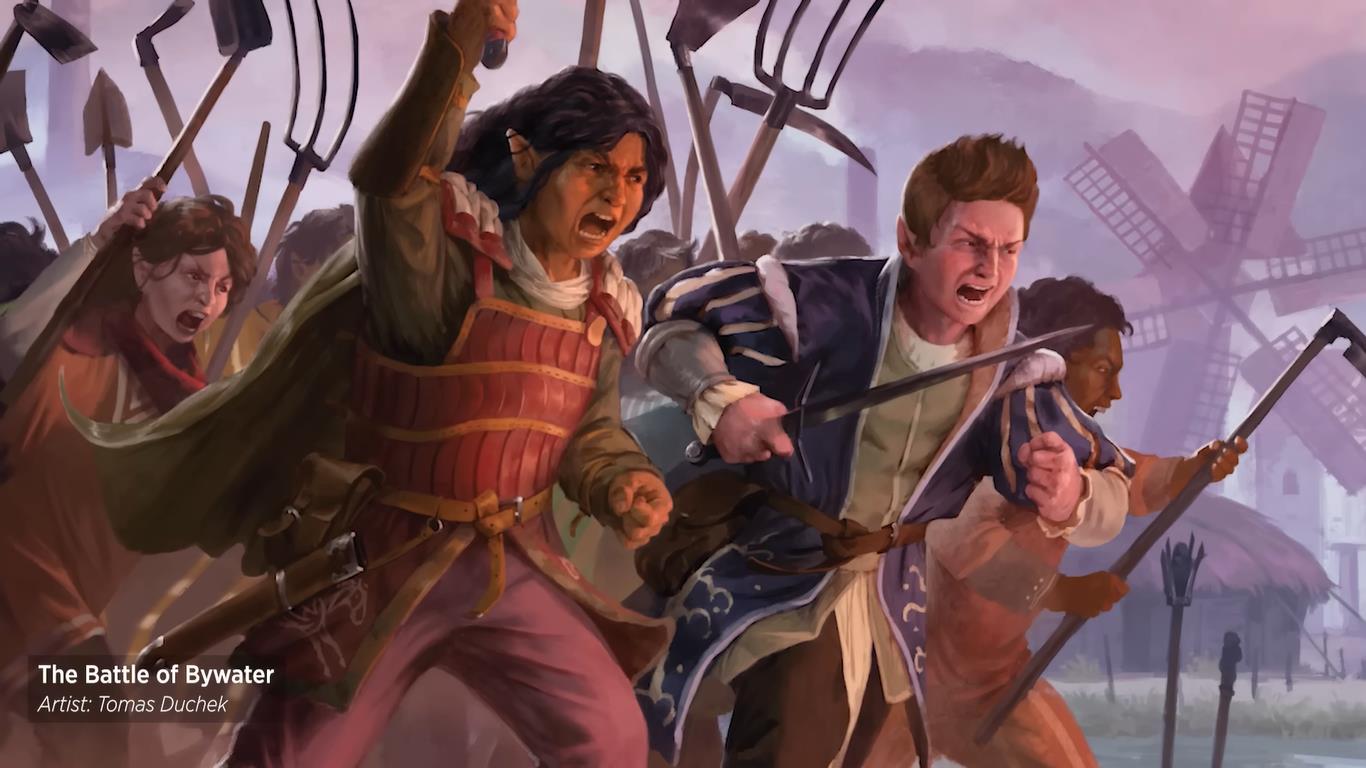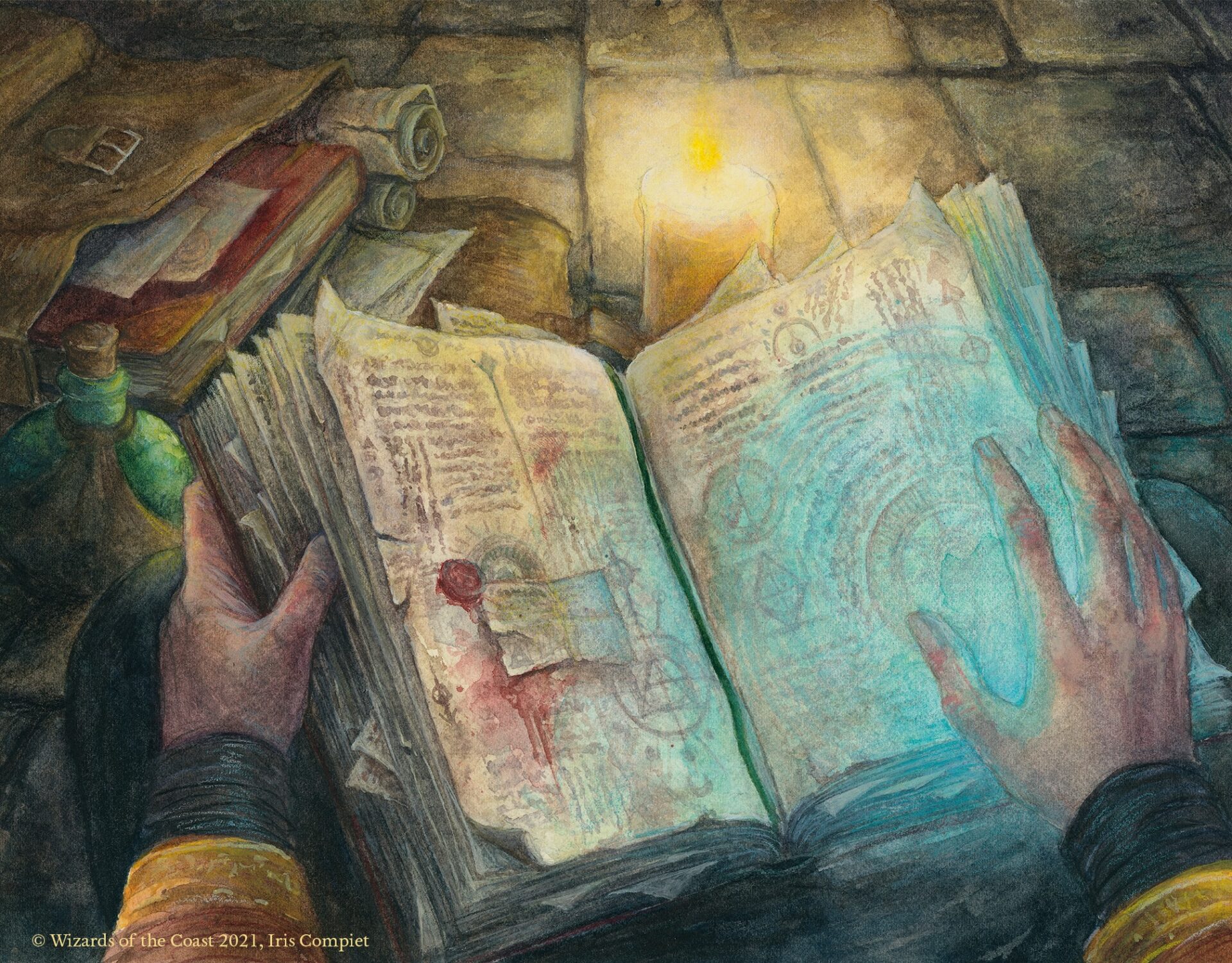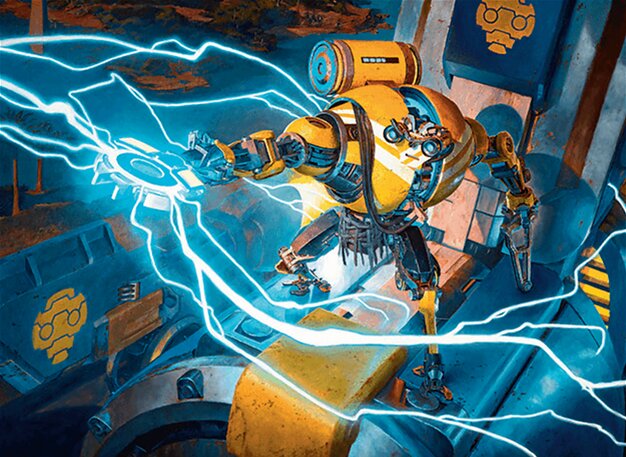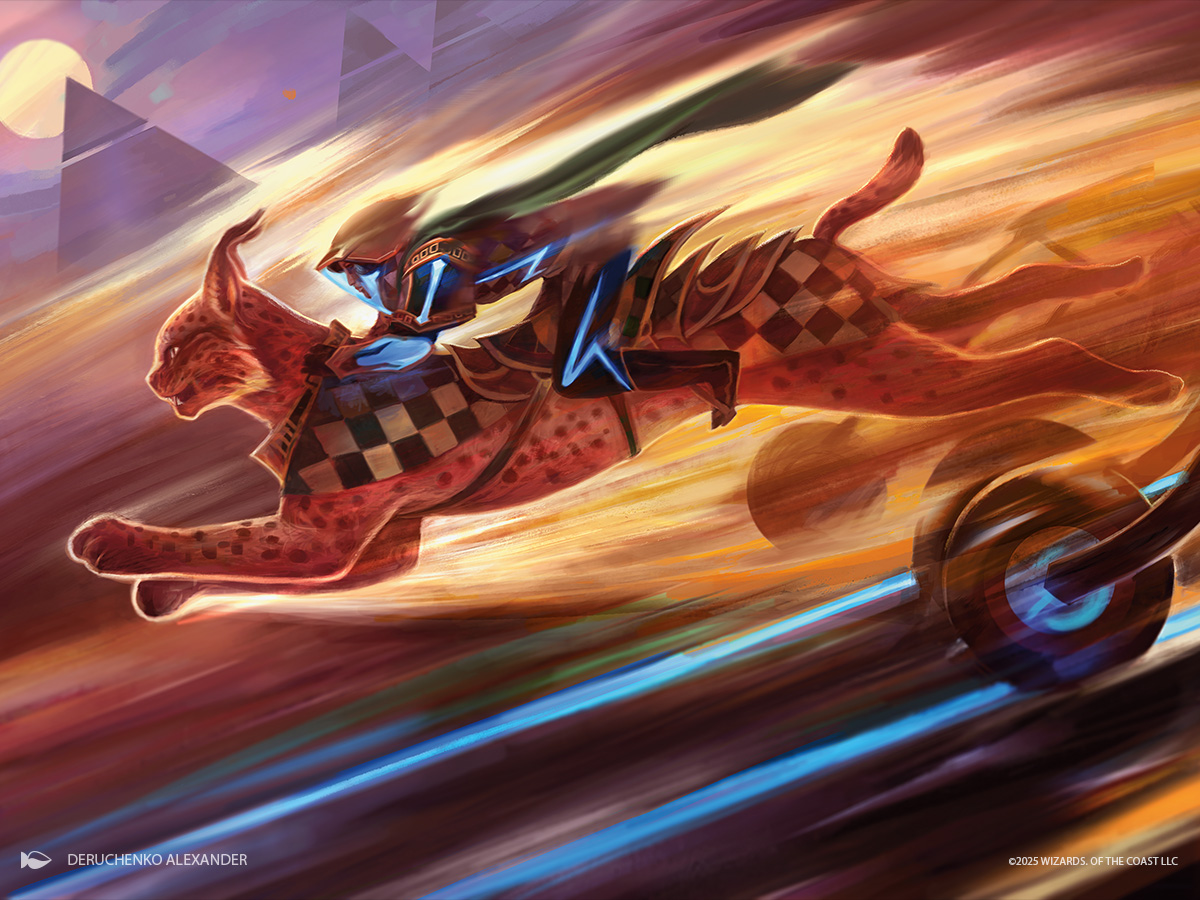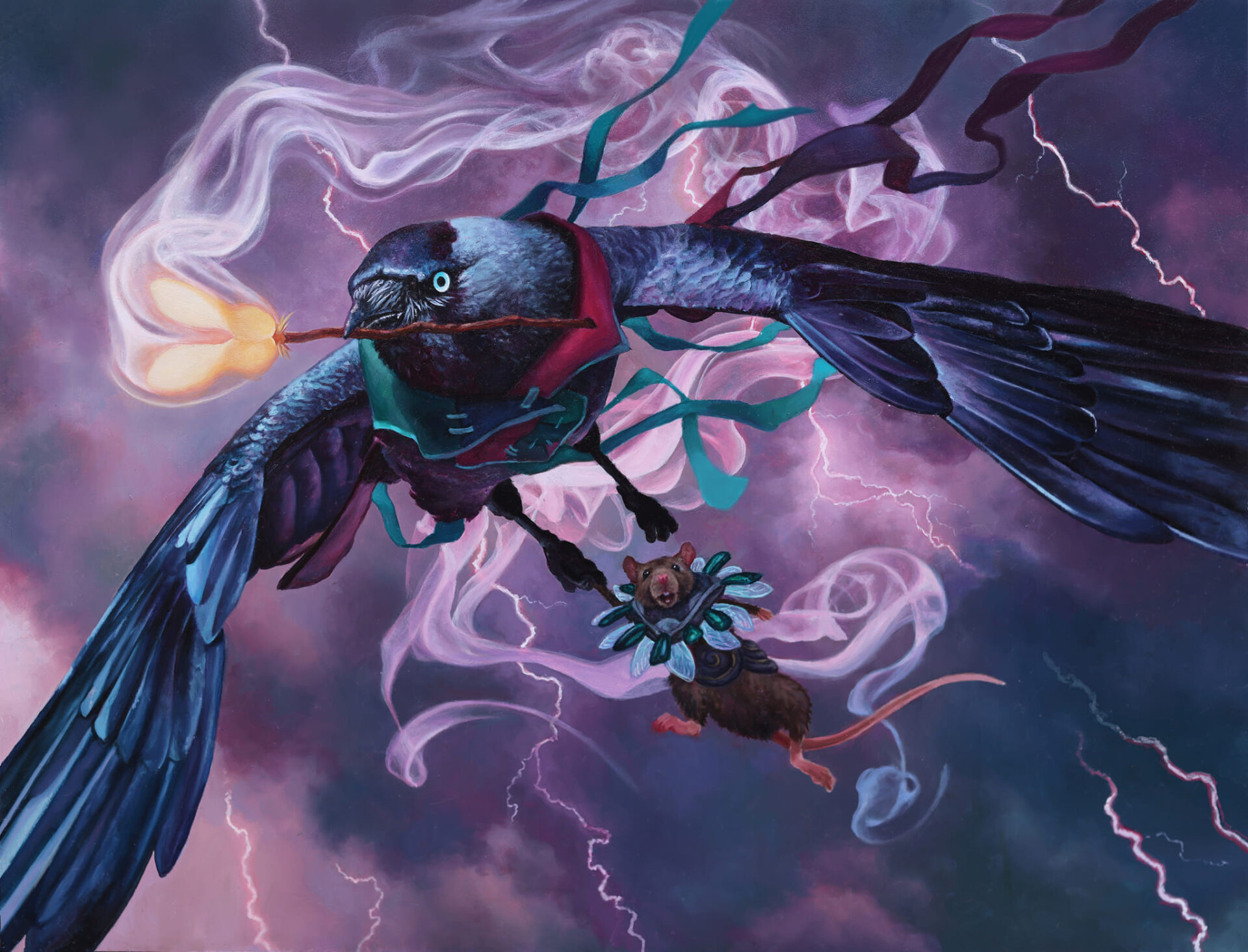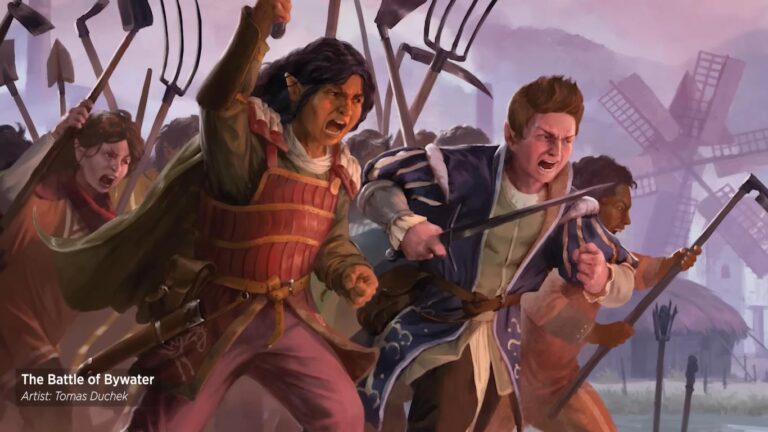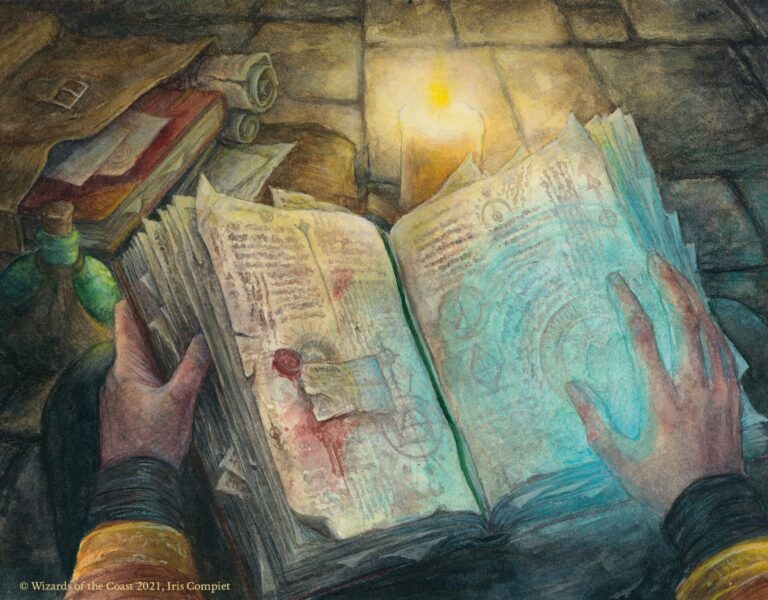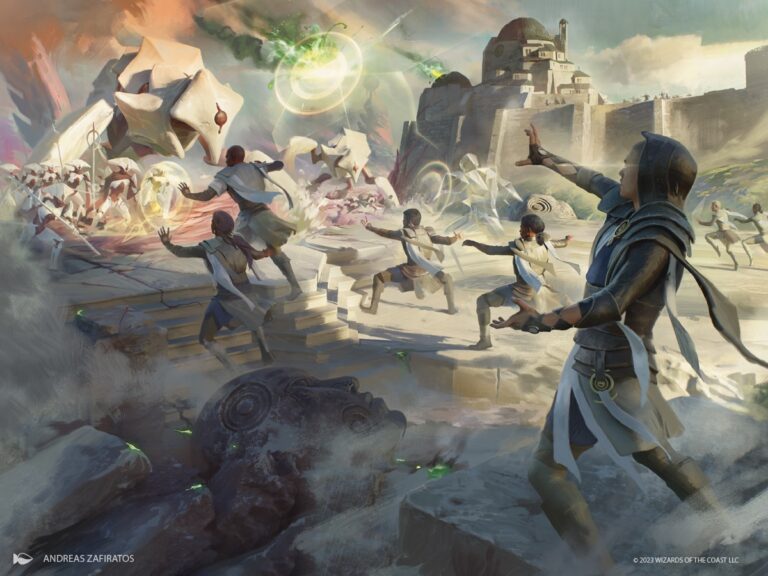That is, what you need to know about the Layers
Partially in theme with the article, the parts in italics belong to a higher layer of study, so if you prefer to start slowly you can safely skip them.
“Magic cards are like onions”
“Do they stink?”
“Maybe some players, anyway NO!”
“Ah, do they make you cry?”
“Yes… No!”
“Ah, you leave them in the sun and they turn brown and then white hairs show up?”
“NO!!! LAYERS! Onions have layers, Magic cards have layers “
Thanks to Shrek for this touching introduction, today we tackle a topic that is perhaps the most difficult at a regulatory level of all Magic: Layers. There are rather convoluted situations that in our format happen more often than in others (as you can see from the examples), and as always, a deep knowledge of the rules that govern those situations provides us with a decisive tactical advantage in the game. There are basically four things to know and they can only be simplified up to a certain point, so I’ll go in order and try to be as clear as possible.
If your knowledge of the rules is very good, you will be able to find some (hyper?) simplification in the following, but on the other hand I hope you will understand why. In any case, for stranger and more pathological situations than those presented here, the definitive reference is the Comprehensive Rules.
Continuous effects
Continuous effects, in Magic, interact with a system called “Layers”. To regulate the interaction of continuous effects, a real hierarchy has been established, the “Layers”, in which every single continuous effect has a specific place according to its type. More precisely, every single part of every single effect belongs to its own Layer.
Having clarified this, when we have to try to understand what will be the final result of multiple continuous effects, just start from the “base” state of the object and apply the effects one after the other in order, starting from Layer 1. In particular, excluding rare exceptions that we will see in a while, you must NEVER think about which effect came before and which after: regardless of when the various effects started, they are applied in hierarchical Layer order.
This layered application is automatically and continuously applied by the game itself, so it is subject to “recalculation” whenever necessary. It is even faster than State-Based Generated Actions, so a creature that “halfway through” the calculation should have Constitution 0 won’t die but the game will still wait for the end of the stack to see if it’s still too thin to survive.
The order of the Layers
Once you have clarified how the Layers work, what you need to remember is obviously in what order they are placed, or what is the hierarchy. And it is:
- Rules and effects that modify the so-called “copiable values” of an object
- 1a. Effects of copying and “merging” objects
- 1b. Effect of being “face down”
- Effects that modify the control of an object
- Effects that modify the text of an object (replacing one color with another and things like that)
- Effects that modify the type, supertype and / or subtype of an object
- Effects that change the color of an object
- Effects that add or remove abilities (including Ikoria’s keyword tokens) or that prohibit an item from having a certain ability
- Effects that modify a creature’s power and toughness
- 7a. Effects that define power and toughness
- 7b. Effects that fix the “base” power and toughness at a specific value
- 7c. Effects (and counters) that modify power and toughness
- 7d. EEffects that exchange power and toughness
The basic “copiable values” of an object are what is written on it, and are in fact modified by the effects of Layers 1a) and 1b). A consequence that it is good to keep in mind is that when we copy an object, we copy all and only the first layer of effects, the rest remains with it and that’s it.
Layer 7a deserves a separate study, because obviously we are talking about Characteristic defining Abilities, another strange beast of the Magic rulebook. It is also worth noting the cumbersome presence of Ikoria among the Layers: between Trample tokens and mutated creatures, the rules have undergone major changes upon the release of that expansion.
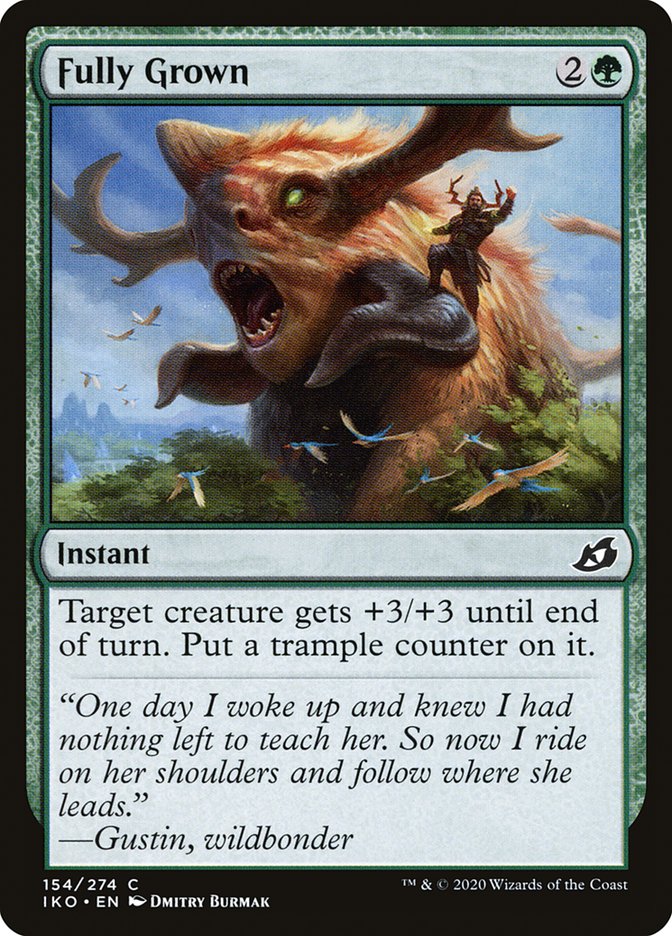
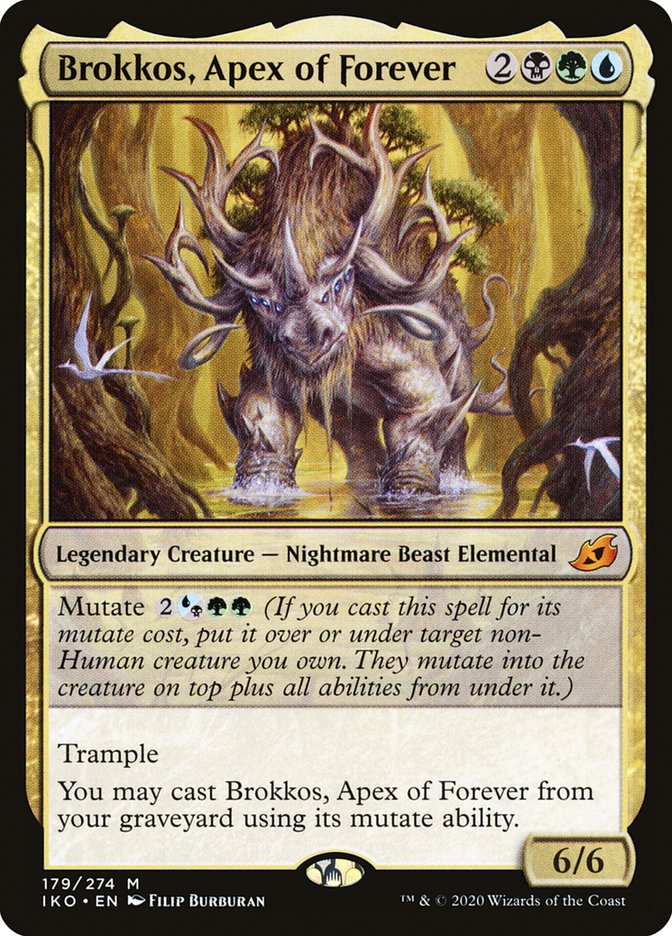
Within the same Layer, the “timestamp” applies
From what has been said so far, it should be clear what happens when effects in different Layers are in action. When instead there are more effects belonging to the same Layer, the situation is resolved in a rather calm way: they are applied from the oldest to the most recent.
This specification may be irrelevant, as in the case where one effect gives + 3 / + 3 and another gives + 1 / + 1 (both at Layer 7c): for the commutative property of addition the result is + 4 / + 4 regardless of which one applies first. But it can also be fundamental, as in the case of an effect of + 3 / + 3 and a doubling effect of power and toughness: in this case, a 1/1 can become a 5/5 or an 8/8 depending on which one applies before and which one after.
This “policy” may seem strange if you are familiar with the replacement effects, because in fact it is the exact opposite of how we proceed in that case! Among multiple replacement effects that would affect a certain event, the player concerned decides the order of application; here, on the other hand, the order is given from the moment each effect is born. So be careful not to get confused.
The fearful dependency
Again, what has been said so far is not overly abstruse and covers a good part of the situations. But unfortunately, and perhaps this is the point that earned the Layers the bad name they have, there is still talk of the infamous dependecy.
In fact, we have not considered an ambiguous situation, if not exactly indeterminate: there are two effects at play, say A and B, belonging to the same layer and such that A affects what B does, on whom B applies or even on existence of B. In this specific case, the “influenced” effect B is said to be dependent on A and is always and in any case applied after A, regardless of the timestamp.
A few examples
The situations that follow, as you will see, are by no means abstruse situations impossible to encounter in Centurion, yet their resolution requires a thorough knowledge of the Layers and their functioning.
Easy
Oko, Thief of Crowns makes Elk Reyhan, Last of the Abzan with 3 counters on it.
The Elkfying effect of Oko acts in Layer 4 (transforms into an elk creature), 5 (turns green), 6 (removes abilities) and 7b (transforms into 3/3). The tokens act at Layer 7c, so after the stats have become 3/3. Result: a very angry 6/6 green elk named Reyhan who, however, does not transfer his counters when he dies.
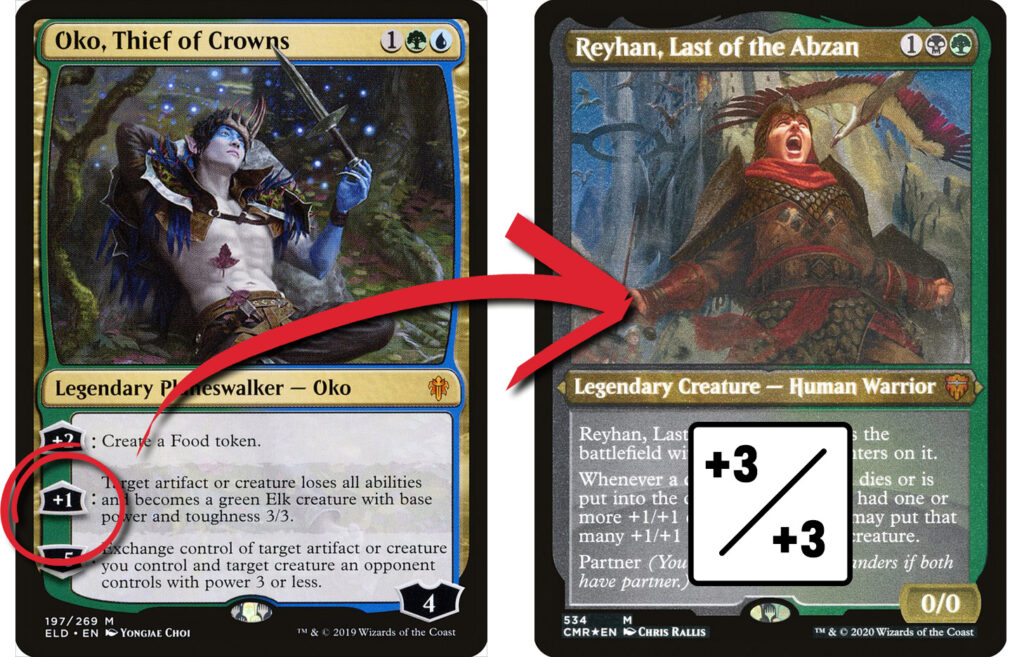
Medium
Oko, Thief of Crowns and Lignify affect the same
creature.
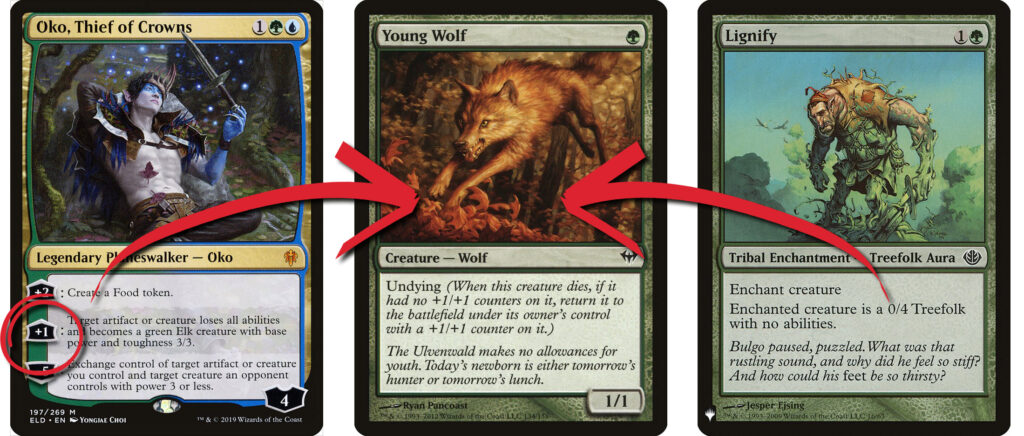
The effect of Oko is fragmented in the previous example, while that of Lignify acts in Layer 4 (transforms into Treefolk), 6 (removes abilities) and 7b (transforms into 3/3). In the three Layers in common, the last effect prevails, so that an Elk subject to Lignify will be 0/4 and an Elkfied Forest Tree will instead be 3/3.
Hard
Oko, Thief of Crowns makes an Elk of a Magus of the Moon.
Magus of the Moon affects non-basic lands in Layer 4 (turning them into Mountains with the inherent ability to provide red mana), while Oko acts in Layers 4, 5, 6 and 7b. In Layer 4 there are therefore two effects – being a Magus Elk Creature and being Mountains of non-basic lands – completely independent of each other, and therefore apply from the oldest to the most modern (not that the order is relevant), after which the Magus undergoes the rest of his transformation, including losing abilities. Told this way, it should be clear that non-basic lands remain mountains
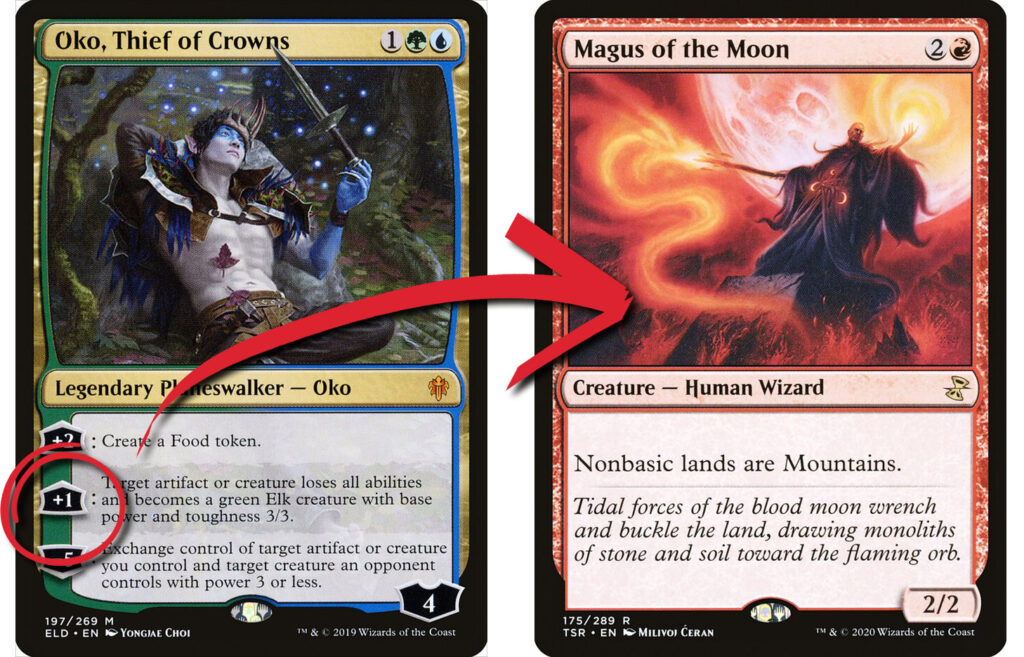
Extremely difficult
Urborg, Tomb of Yawgmoth and Blood Moon are on the field.
Both of these effects act in Layer 4, but this time we are in a situation of dependence: under the effect of the Moon, that of Urborg ceases to exist as it vanishes completely from the text of the card. The consequence is that INDEPENDENTLY who entered last, Urborg will wait for Luna before applying… and therefore never will. In short, a lot of mountains, and no Badlands.
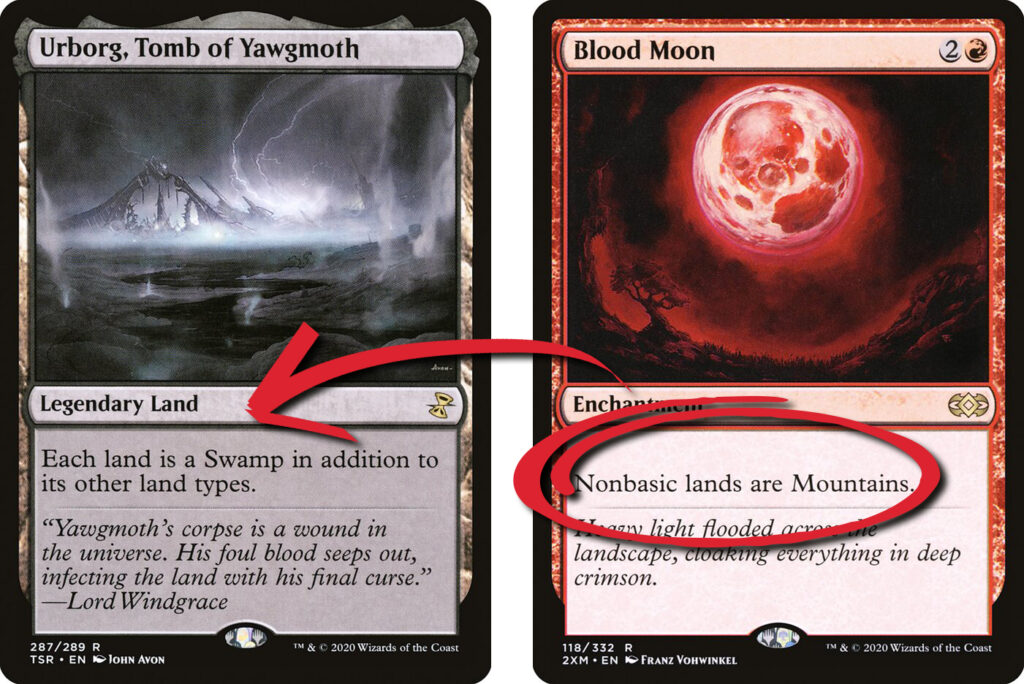
Extreme
Song of the Dryads enchants a Blood Moon.
Blood Moon, as already seen, acts at Layer 4. Song of the Dryads instead acts at Layer 4 (transforms into land – forest, deleting the rest of the text) and 5 (transforms into colorless). The two effects at Layer 4 are clearly dependent: The Song’s effect, in addition to making the Moon a lnad and therefore modifying the set of objects influenced by it, makes that of the Moon non-existent. Consequently, the effect of the Song is applied to Layer 4 first and then … the rest of the Song and that’s it. The lands become their non-bloody version again.
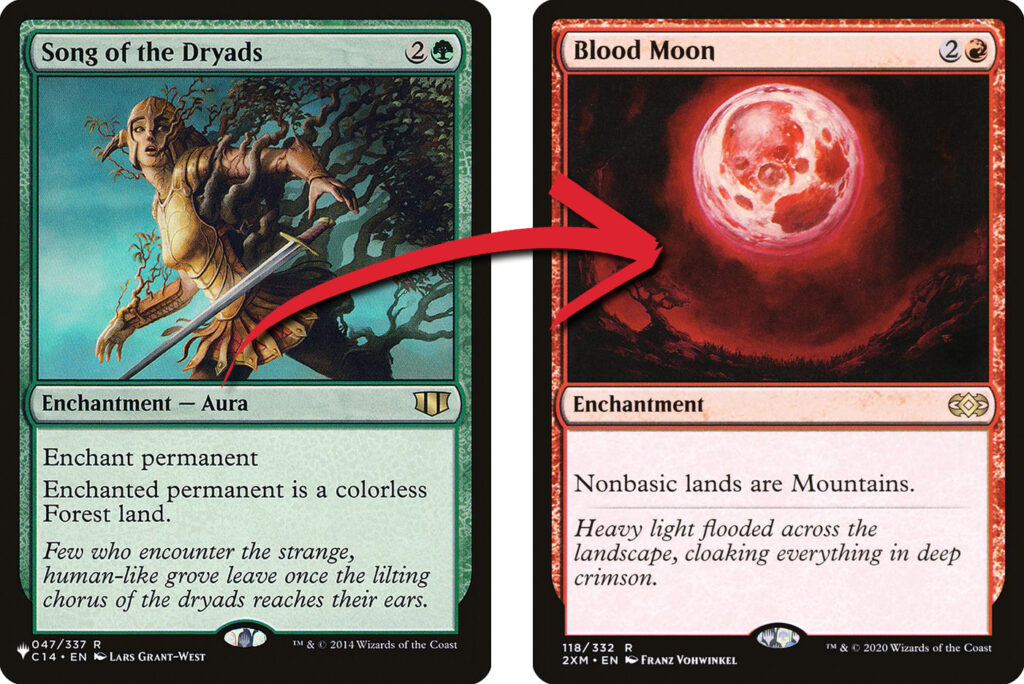
Written by
Matteo Braghiroli

